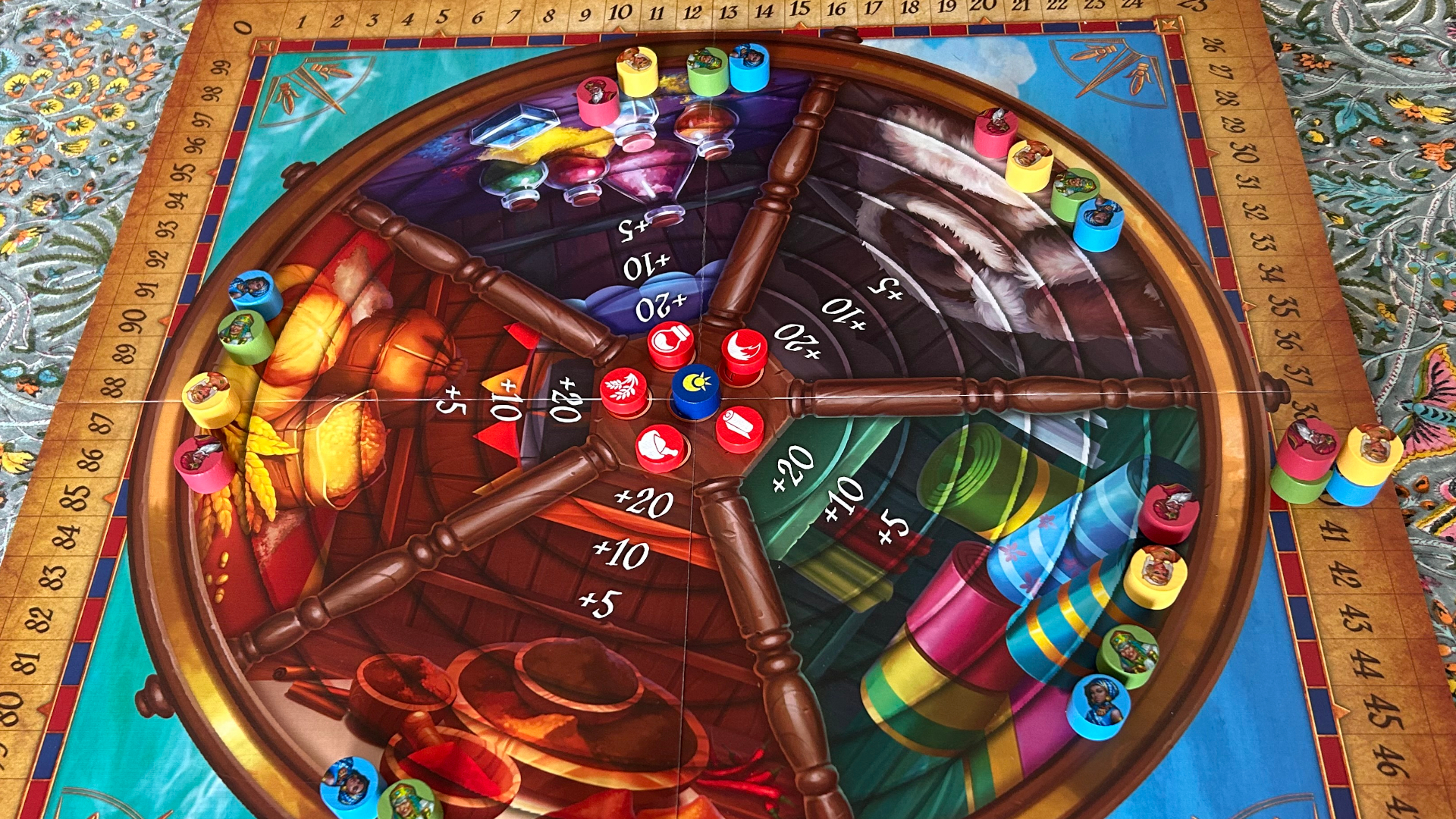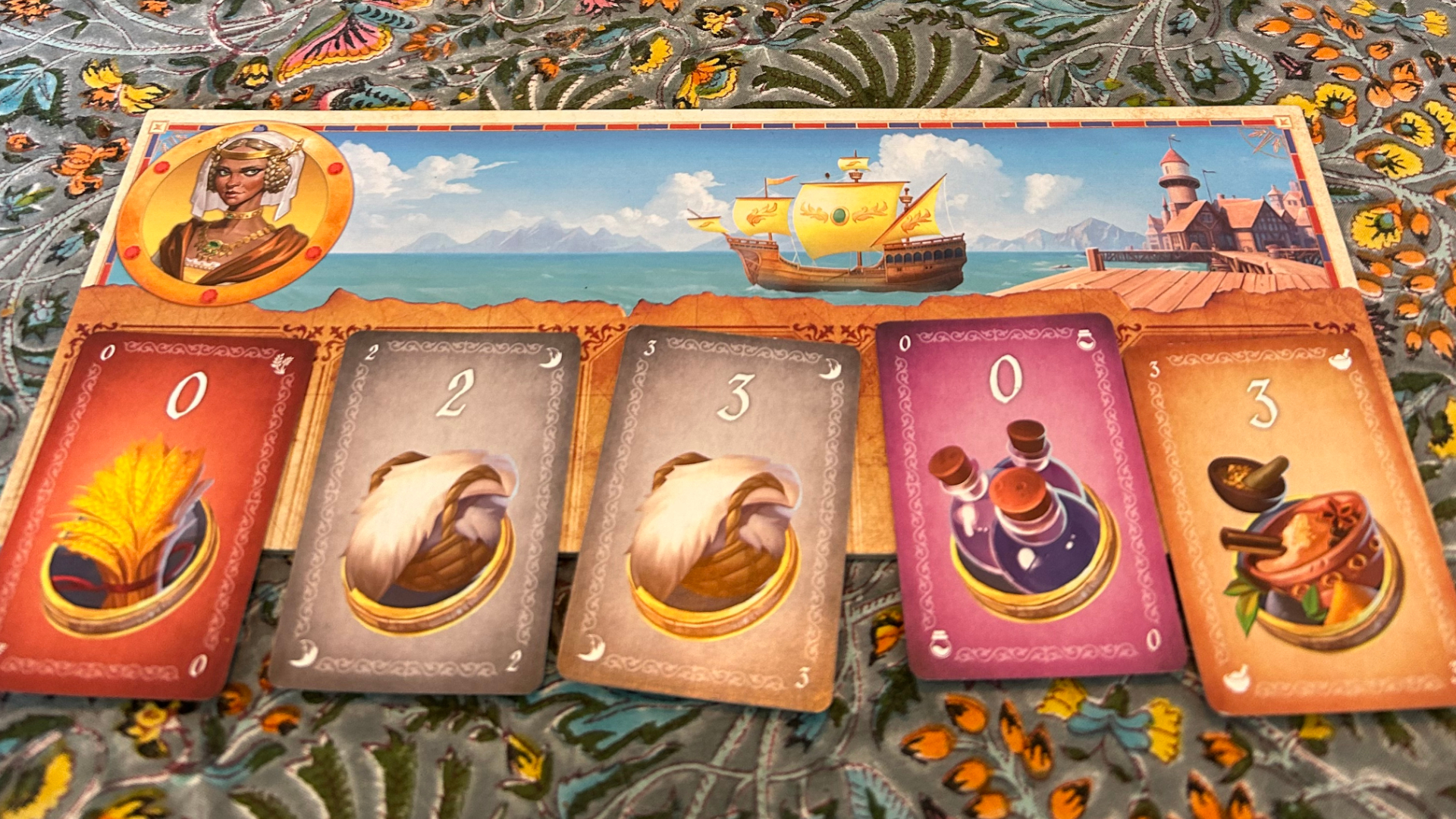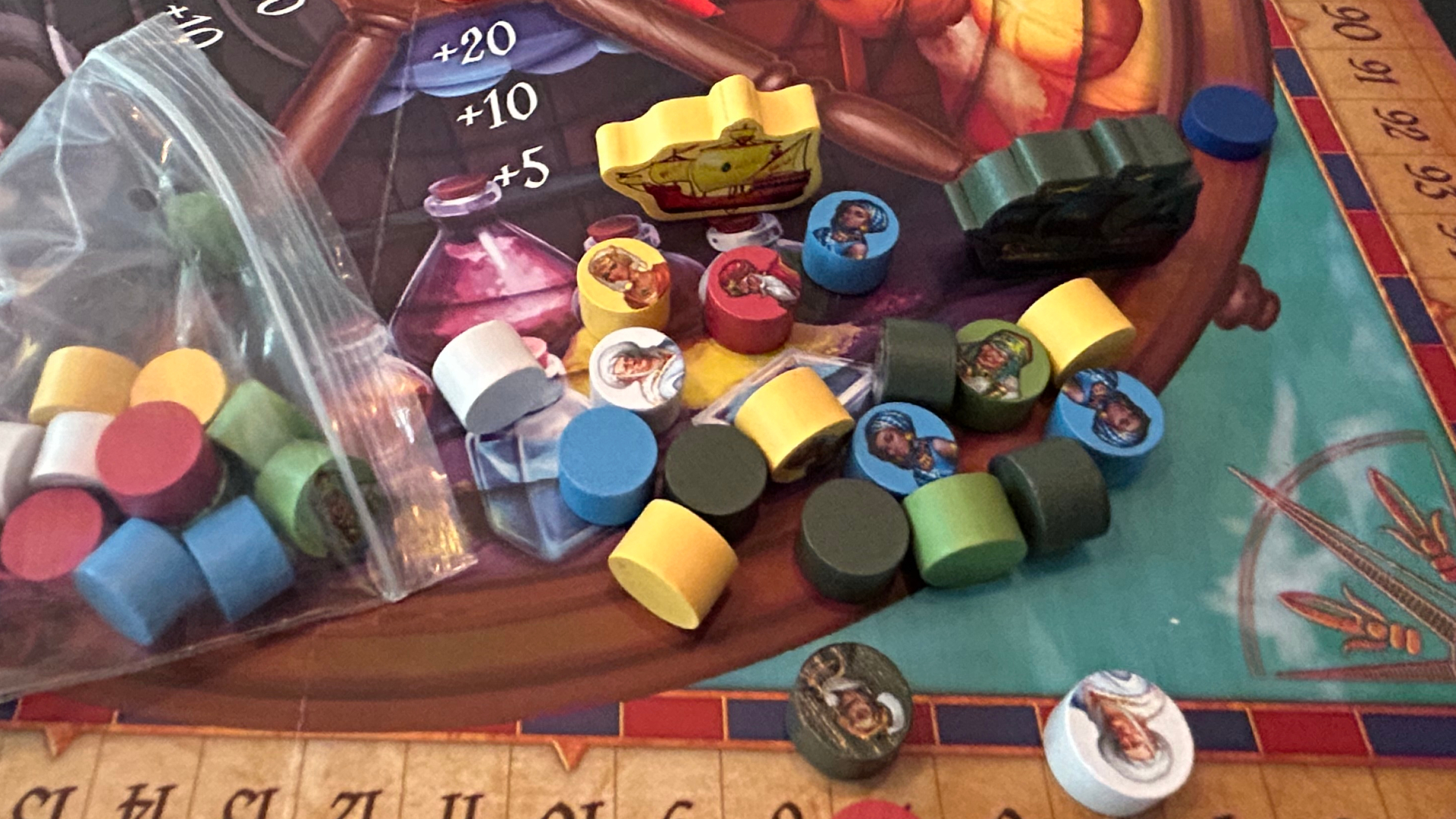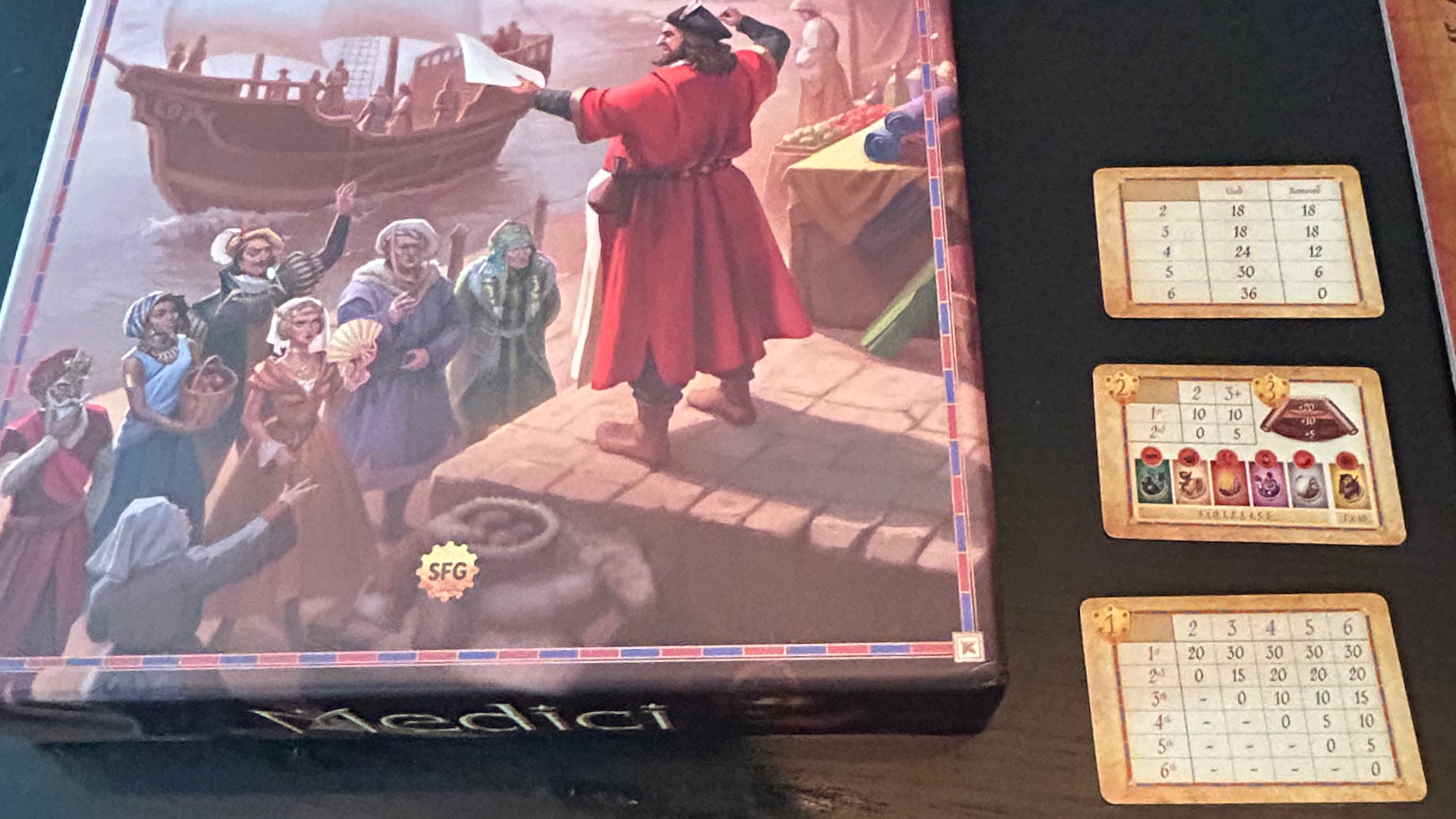GamesRadar+ Verdict
Medici is the rare game with enough strategy to satisfy serious board game enthusiasts but mechanics simple enough to teach casual players. Its competitive auctions and card counting works best with a full table of six players, offering a fast and streamlined experience that’s lacking in the more confrontational and luck-based smaller games.
Pros
- +
Easy to teach, providing an introduction to auction games
- +
Gameplay is very fast and dynamic
- +
A great option for six players
Cons
- -
Not enough player aid cards
- -
New ship tokens don’t fit well on the board
Why you can trust GamesRadar+
Reiner Knizia released Medici back in 1995 as part of a trilogy that helped establish the auction board game genre. Fast-forward a couple of decades and Steamforged Games has rereleased the classic, where two to six players take on the role of rival merchants in 16th century Florence bidding for goods to fill their cargo ships and maximize their profits. While Steamforged has updated the art, it's kept all the core gameplay the same.
So, is this old favorite worth revisiting now? And does it still deserve a place on lists of must-have classic board games?
Medici features & design
| Price | $39.99 / £39.99 |
| Ages | 10+ |
| Genre | Auction |
| Complexity | Low |
| Players | 2 - 6 |
| Lasts | 60mins |
| Designer | Reiner Knizia |
| Publisher | Steamforged Games |
| Play if you like | Power Grid, Ra, the Renaissance |
- Fill your hold with five types of cargo or risk getting a random selection for free
- New ship tokens look cool but don’t actually fit well on the board
- Could use more player aid cards, since they’re tiny
In Medici, each player has a colorful board illustrating their character and ship and five slots for goods, with add-ons providing two extra slots that turn this into a 2-player board game. No matter how many people sit around the table, players all start with the same number of florins, which represents both the points they’ll need to win the game and the resource they use to bid on goods. These are tracked by moving pieces around the perimeter of the board.
The new Medici also gives each player a stylish ship token that’s meant to be their points tracker, but they don’t actually fit on the board if more than one person has the same score, which is especially common early in the game. We wound up just using extra player counters instead in my game sessions, leaving the boats as decorations on our individual boards.

The game has a set of 36 cards, all but one representing the game’s core commodities: cloth, spice, grain, dye, and fur. Each is valued at 0 to 5 points and there’s a special gold card that’s valued at 10 points but doesn’t impact the commodity track.
With six players, you use all 36 cards every round. Fewer players means that cards rotate in and out randomly between the three rounds. The ability to count cards is baked into the game when you have more players, creating a press-your-luck mechanic if you’re hoping to see the gold card or a specific commodity. The element adds extra strategy not found in the more randomized smaller games.
There’s little margin for error, but if your strategy doesn’t work well, the game at least ends quickly
The cards are tiny, which is fine for representing the commodities and their values but works poorly with the player aid cards. There’s only one of each, and while one is only used at the beginning of the game to determine the deck size, it would be nice to at least have a few more of the cards showing the points awarded for each rank to share around a big table so everyone could better determine how many of their own points to bid based on the prizes up for grabs.
Medici gameplay

- Players take turns using their point totals to bid on lots of cards representing goods of various values
- At the end of each day, they score points based on how they did relative to other players and cornering the market on various goods
- You only get one chance to bid on each lot so have to make your best bet as to how others will value it
The first player to go each round creates an auction by laying out one to three cards on the deck, provided at least one player has enough space in their hold to take all the cards if they win the lot. They can stop at any time based on what they flip, choosing whether to make people spend a lot on a highly prized single card or dilute the value of a good card by tossing on some cards others might not want. Whoever creates the auction always gets the opportunity to place the final bid, provided they have enough space to take it.
Each player then has one chance to either pass on the lot or place a bid. Since your points are your bidding resources, the key is to try to puzzle out a number that will disincentivize other players from outbidding you or push your opponents to spend more on something you expect them to buy anyways. The best strategy depends on where in the order of bidding you are, how much space you have in your ship and what your goals for the round are.
After each round of bidding, the winner puts their cards in their hold and the first player token passes. Bidding early gives less flexibility, as you’re locked out of later bids if you can’t fit them in your hold. An auction creator can strategically dole out two or three cards to limit the number of people who can participate or just keep the bidding at one card to make it as hotly contested as possible.
Medici’s blend of strategy and speed demonstrates why it remains a classic nearly two decades after its release
When all but one player has a full hold, that last player fills their board with cards randomly dealt from the top of the deck. These cards might be useless but sometimes you can get lucky and get exactly the cards you need without having to pay any florins at all! However, if the deck runs out entirely, players can be forced to sail with empty cargo space, which is almost never worth the florins they’re saving.
After a day of bidding, the total value of all the cards in each player’s hold is added up and points are awarded by rank based on the number of players. This scoring mechanism is at its best with more players who can strategically try to conserve resources and go for second or third place rather than pushing to be first. However, the smaller the table, the more Medici takes on a winner-take-all quality. Two-player games are incredibly fast, even with the two extra spots on a cargo hold, but they lack the satisfying dynamic of having escalating bids.

While the point values are reset each round, players build lasting dominance based on how much of each commodity they acquired, moving player tokens up a track for each product in the center of the board. Players who have acquired four to six of a given commodity over the course of the game rack up extra points at the end of every round.
This provides the opportunity for individual strategy as players already invested in a commodity might be willing to pay more for even a low value card that will push them further up that track, at least until the point where they max it out and that good becomes worthless to them again. Each player will often focus on one or two key commodities, creating rivals for dominance in the category.
The center board features a series of tokens that can be flipped to represent when each of the commodities has been scored for the round and a small stack of round tokens making it very easy to keep track of the game status. The game only lasts three rounds so there’s little margin for error, but if your strategy doesn’t work well, the game at least ends quickly.
Should you buy Medici?

If you have a good-sized group looking for a light warm up or palate cleanser between heavier games or want to present an alternative for the lighter titles you usually play, Medici is a good option to add to your collection. It’s easy to learn and quick to play, keeping players engaged throughout the round with a dynamic bidding process sure to spark some friendly competition.
While Medici has a two player mode, that’s not where this game shines. Some of the design choices for the new version are better conceptually than practically. But if you can regularly muster five or six players, Medici’s blend of strategy and speed demonstrates why it remains a classic nearly two decades after its release.
Buy it if...
✅ You regularly play with a large group looking for a satisfying but light game
Want a break from 7 Wonders and Ticket to Ride? Medici offers an easy taste of the auction genre
✅ You like a bit of friendly competition with dynamic strategy
Puzzling out how your fellow players will value each card and pushing them to spend the maximum amount of resources is the key to victory.
Don't buy it if...
❌ You mostly play two-player games
While Medici can be played with two people, it’s a very different and fairly unsatisfying experience that’s far more luck based.
❌ You prefer longer games with a lot of complexity
Even with six players, Medici wraps up in about an hour so if you want a game you can really sink your teeth into, it might not be satisfying.
How we tested Medici
Disclaimer
This review was made with a copy of the game provided by the publisher.
Our Medici review is the result of numerous hands-on playtest sessions with varying numbers of players, along with comparing this version of the game to the original. The review was made by a writer with extensive experience critiquing tabletop games.
You can learn more on this process in our guide to how we test board games and tabletop RPGs, or the more general GamesRadar+ reviews policy page.

Samantha is a freelance writer that specializes in tabletop gaming. Her credits include Dicebreaker, IGN, Polygon, and The A.V. Club.



